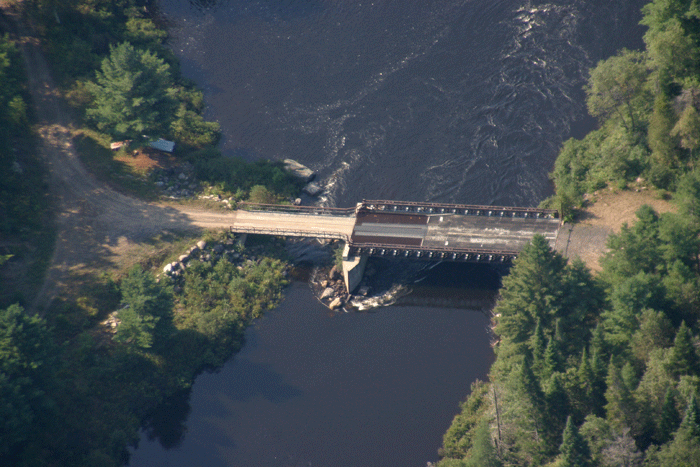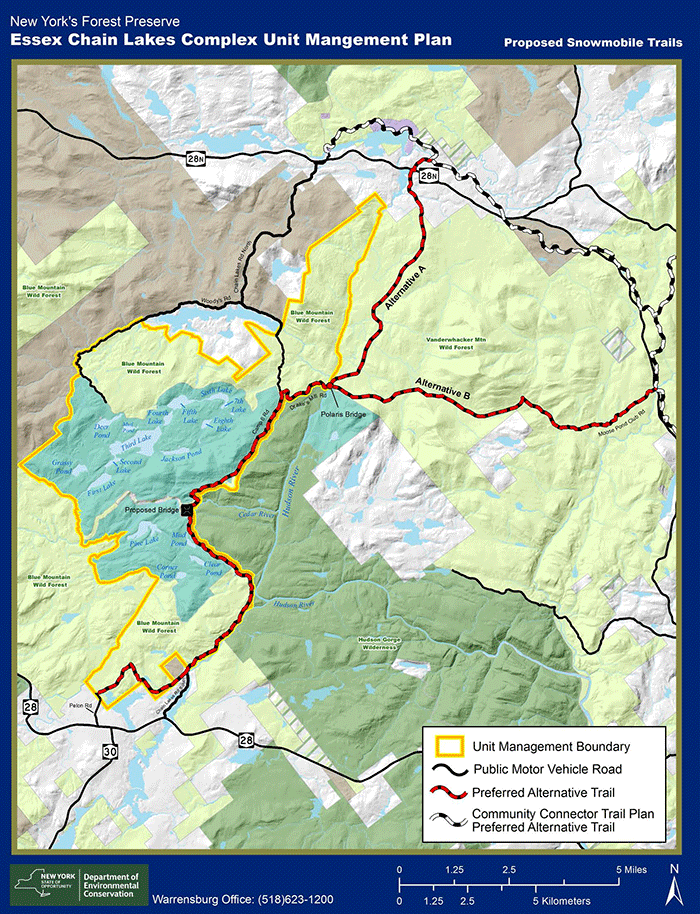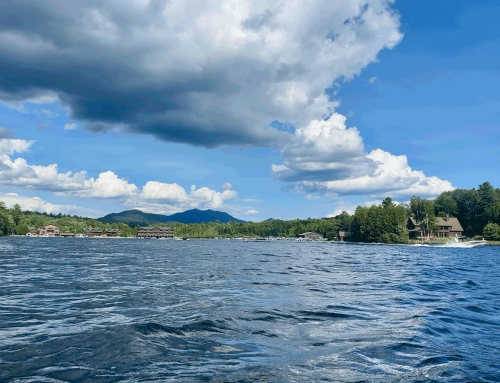The Polaris Bridge over the Hudson River should be removed and the river restored. The bridge crosses a beautiful flatwater stretch of the Hudson, one of the most picturesque spots in the Adirondack Park. The Polaris Bridge is a bridge to nowhere and keeping it will only lead to widespread natural resource degradation as well as violation of state laws, regulations, and policies.
The bridge was part of lands purchased by the state from the Nature Conservancy that included the Essex Chain Lakes and extensive lands along the Hudson. Residual rights for use of the bridge remain until the end of 2018 for private leaseholders. The bridge was built by Finch, Pruyn in the early 1990s, and state permits clearly show that it was for forest management. It was never intended for—and never used for—public recreational purposes.

DEC proposes to keep the Polaris bridge. PROTECT believes this violates the Wild, Scenic and Recreational Rivers Act, DEC regulations, and the State Land Master Plan. This bridge should be removed and the river corridor restored, PROTECT supports canoe access/parking area to the Hudson River at the site of the bridge.
These lands were classified at the end of 2013, and now the state is drawing up management plans for public recreation. The thousand acres of former Finch lands on the east side of the Hudson are to be classified as Wilderness once the leaseholders’ rights expire.
Protect the Adirondacks—as well as the Adirondack Mountain Club, Adirondack Wild, and the Adirondack Council—oppose retention of the Polaris Bridge, while state officials, motorized-recreation groups, and local-government leaders call for the bridge to be maintained and used as part of a new snowmobile-trail network.
Snowmobile enthusiasts see the bridge as a vital connection for the hamlet of Minerva, allowing riders to reach Indian Lake and Newcomb. But using the bridge would require building a new trail through a trailless part of the Vanderwhacker Mountain Wild Forest area east of the Hudson. Such a trail would entail cutting of thousands of trees and excavating and grading a new road-like trail with heavy machinery. This would be disastrously disruptive to a wild part of the Forest Preserve.
Retention of the bridge violates the Wild, Scenic, and Recreational Rivers Act. The bridge is in a classified Scenic River area, which precludes public motorized uses. Further, DEC regulations call for four-foot wide trails only for non-motorized uses in Scenic corridors. The state would need to change the law and DEC regulations to retain this bridge.

This map was produced by the Department of Environmental Conservation and show two new snowmobile trails that it would cut through wild trail less parts of the Vanderwhacker Wild Forest to utilize the Polaris Bridge. Without these trails, the Polaris Bridge is a bridge to nowhere.
A snowmobile trail over the bridge would also violate the State’s “Snowmobile Trail Guidance” policy that calls for trails to be located on the periphery of Wild Forest areas, not run through the heart of a wild trailless area. The guidance also requires that trails not be redundant. There is already a popular snowmobile trail that connects Newcomb to Indian Lake, and the state is working on a trail that connects Newcomb to Minerva that largely parallels Route 28N. A trail using the Polaris Bridge is unnecessary.
A Minerva-to-Indian Lake trail that uses the Polaris Bridge would also violate the 2006 Adirondack Park Snowmobile Plan, which listed priority community-connector trails in the Adirondacks. A Minerva-to-Indian Lake trail is not listed as a priority. The state would have to revise this plan before it could approve or build such a trail.
Forest Preserve lands on the east side of the Hudson should be accessed by canoeists on the river or through a trail network in the Vanderwhacker Mountain Wild Forest Area. The state should let the wild parts of the Vanderwhacker Mountain region remain so and allow the former Finch lands to recover from 150 years of active logging and naturally be reclaimed and restored by the forest.
Protect the Adirondacks will work throughout the current DEC public hearing on the new Essex Chain Lakes Complex Unit Management Plan to oppose retention of the Polaris Bridge.
This article was originally published in the Adirondack Explorer magazine.





